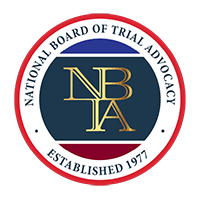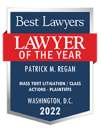Call Us Now
202-463-3030
Schedule a Free Consultation
DC Uber Accident Settlement Amounts
Ridesharing services, such as Uber, have revolutionized the transportation industry, offering convenience and flexibility to millions of users worldwide. However, the rise of these platforms has also given rise to a new set of challenges and concerns when seeking accident-related settlements, particularly in the realm of traffic safety and accident liability. Uber accidents, which involve collisions that occur when a driver is operating under the Uber platform, have created a complex legal landscape that intersects personal and commercial vehicle use, insurance coverage, and corporate responsibility.
Complete this form and our team will get back to you as soon as possible







Ridesharing services like Uber have become an integral part of the transportation landscape, providing convenience and flexibility to millions of users. However, as with any mode of transportation, accidents involving Uber vehicles can and do occur. If you’ve been involved in an Uber accident, you may be wondering how much compensation you could receive in a settlement from Uber, or if you can receive a settlement from Uber at all. This section will cover the factors that influence the value of an Uber settlement, the potential types of compensation you may be entitled to, and the role of an experienced Uber accident attorney in helping you obtain a fair settlement or pursuing a lawsuit.
MILLION
Wrongful Death Settlement
MILLION
MILLION
Wrongful Death Verdict
MILLION
Premises Liability Settlement
MILLION
Wrongful Death Settlement
MILLION
Wrongful Death Verdict
MILLION
Medical Malpractice Settlement
MILLION
Personal Injury Settlement
MILLION
Car Accident Settlement
Several factors determine the value of an Uber settlement, which can vary significantly from case to case. These factors include:
The extent of your injuries plays a substantial role in determining the value of your settlement. Generally, more severe injuries require extensive medical treatment and can significantly impact your life, resulting in higher compensation.
Compensation for medical expenses typically covers past and future costs related to treating your Uber-related injuries. This may include hospital bills, doctor visits, medication, physical therapy, and necessary medical equipment.
If your Uber-related injuries forced you to miss work, you might be entitled to recover lost wages. This includes the income you lost while recovering and any future lost earning potential if your injuries prevent you from returning to your previous employment or impact your ability to work.
This category of Uber compensation is intended to compensate you for the physical and emotional distress caused by your injuries. The amount of pain and suffering damages can vary based on the nature and severity of your injuries and the impact on your daily life.
The degree to which each party is at fault for the accident can impact the value of your settlement. In some jurisdictions, comparative negligence may apply, meaning that your compensation could be reduced based on your percentage of fault.
The available insurance coverage from the involved parties can also influence the value of your settlement from Uber.
Uber provides different levels of insurance coverage based on the driver’s status at the time of the accident, and the driver’s personal insurance policy may also come into play.

Navigating the complexities of an Uber accident case and obtaining a fair settlement can be challenging. An experienced Uber accident attorney can provide invaluable assistance in several ways:
An attorney can evaluate the specific circumstances of your case and help you understand the potential value of your claim, based on factors such as your injuries, liability, and applicable insurance coverage.
Your attorney can collect the necessary evidence to support your claim, such as police reports, witness statements, medical records, and expert testimony.
Insurance companies often attempt to minimize the amount they pay in settlements. An experienced attorney can negotiate effectively against Uber, ensuring you receive fair compensation for your damages.
If your case cannot be settled through negotiation and proceeds to trial, your attorney will have the necessary trial experience to present your case effectively in court.
The value of an Uber settlement can vary greatly depending on the specific circumstances of your case. Understanding the factors that influence the settlement value and working with an experienced Uber accident attorney can help ensure you receive the compensation you deserve. By enlisting the support of a skilled legal professional, you can focus on your recovery while your attorney handles the complex legal navigation.
Here, we will delve into the intricacies of Uber accidents and the associated legal cases, highlighting the unique challenges faced by victims, drivers, and legal professionals in pursuing justice and fair compensation. We will also explore the factors contributing to these accidents, the nuances of Uber liability determination, and the critical role of experienced Uber accident lawyers in navigating this evolving area of accident claims.
Uber accident cases and the resulting accident claims can vary widely based on Uber accident specifics, but some common types of Uber accidents are frequently encountered in ride-sharing. Understanding these scenarios can help identify patterns and potential areas for improvement in Uber safety.
Uber drivers may be more prone to rear-end collisions due to the distractions posed by the ridesharing app, navigation systems, or communication with passengers. These distractions can result in delayed Uber driver reaction times, leading to collisions with the vehicle in front of them. Additionally, other drivers may rear-end an Uber vehicle if the driver suddenly stops or slows down unexpectedly to pick up or drop off an Uber passenger.
Uber drivers might be involved in side-impact collisions, also known as T-bone accidents, if they fail to yield at intersections or misjudge the speed of oncoming traffic while making a turn. These accidents can occur due to driver inexperience, distraction, or aggressive driving behaviors.
Uber drivers frequently need to change lanes to pick up or drop off passengers, navigate to their destination, or avoid traffic. If an Uber driver fails to check their blind spots, misjudges the distance between vehicles, or makes a sudden lane change, the Uber driver may collide with another car or force another driver to swerve, causing an Uber accident.
Uber drivers may inadvertently strike pedestrians while dropping off or picking up passengers, especially in congested urban areas with high foot traffic. These accidents may result from driver distraction, failure to yield, or poor visibility.
Though less common, head-on collisions involving Uber drivers can occur if the Uber driver is impaired, fatigued, or distracted, causing the Uber operator to drift into oncoming traffic or make a wrong turn onto a one-way street.
Uber vehicles may be involved in rollover accidents if the driver loses control due to speeding, swerving to avoid obstacles, or taking a turn too quickly. These Uber accidents are more likely to occur when the Uber driver is inexperienced, fatigued, or driving in adverse weather conditions.
Uber drivers can be involved in multi-vehicle accidents, also known as chain-reaction collisions, where one collision leads to subsequent crashes. These accidents may result from driver distraction, speeding, tailgating, or failure to maintain a safe following distance.
The causes of Uber accident cases often stem from factors such as driver distraction, inexperience, fatigue, aggressive driving, impaired driving, and poor vehicle maintenance. By understanding these common accident scenarios and their causes, drivers and passengers can take preventive measures to minimize the risk of ridesharing accidents. However, if an Uber accident does occur, it is essential to consult an experienced Washington, DC Uber accident attorney to help navigate the complex legal landscape and protect one’s rights by seeking a settlement.
Here are some tips for avoiding Uber accidents:
By following these safety tips, drivers and passengers can contribute to a safer ride-sharing experience and reduce the risk of accidents. However, if an accident does occur, it is essential to seek medical attention, gather evidence, and consult with an experienced ride-sharing accident attorney to protect your rights and interests.
Have you or your loved one sustained injuries in Washington DC, Maryland or Virginia? Regan Zambri Long PLLC has the best lawyers in the country to analyze your case and answer the questions you may have.